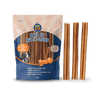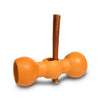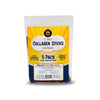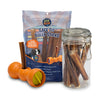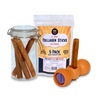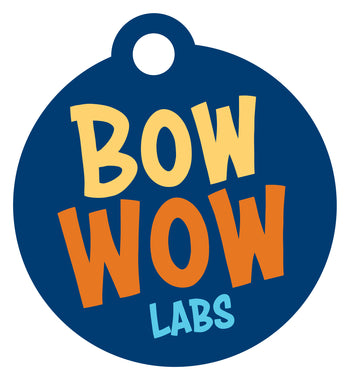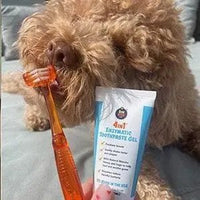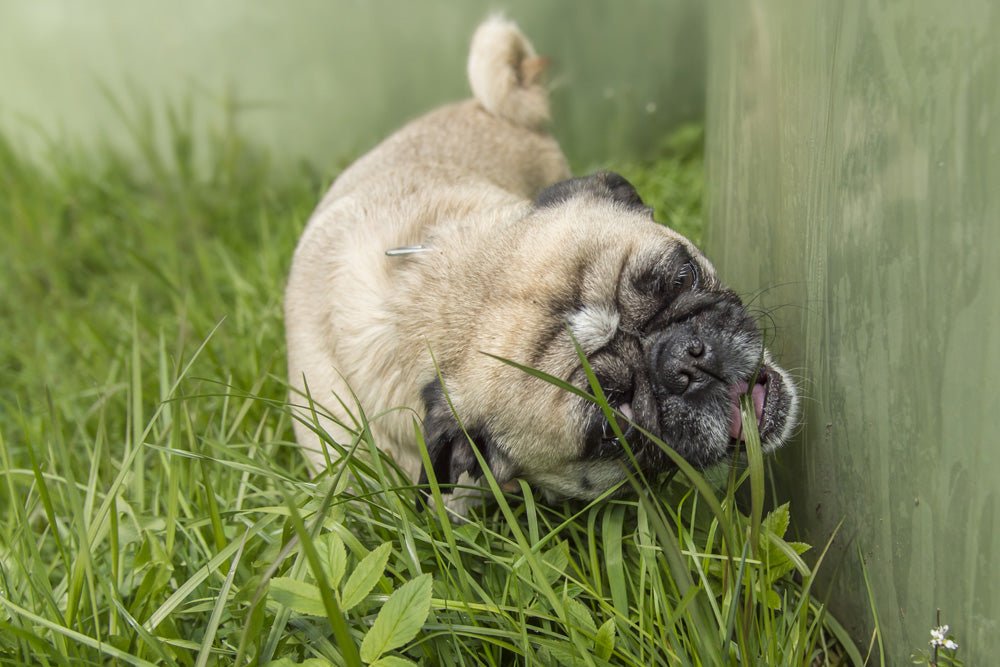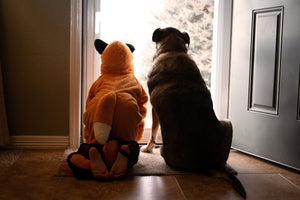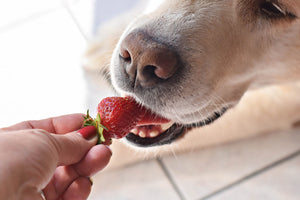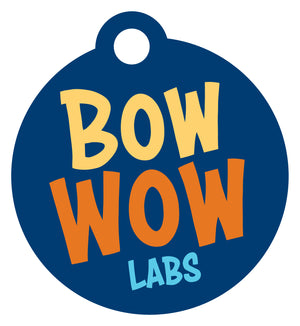3 Reasons Why Your Dog May Be Going for the Green Stuff
The arrival of spring means that plants and grass are sprouting, blooming and growing. As you head outside for longer walks, you may notice your pup is chowing down on the green stuff more frequently.
This time of year, dog owners often tell me that they are concerned about their dogs ingesting the grass growing all around them.
Depending on where they are eating, grass can actually be safe and beneficial to their body. And, contrary to popular belief, dogs aren’t eating grass just because they don’t feel well. Though that may be one reason, there are other reasons why your pup may be munching on grass from your lawn.

But First, The Science Behind Grass Eating
Zoopharmacognosy is the science of animal self-medication, in which animals use plants to heal themselves. So it’s no wonder that when your dog is eating grass they are doing it to help their bodies in some way.
While grass has little nutritional value for our dogs and they have little use for it from a dietary perspective, it is highly effective as a way to self-medicate. You may even notice that your dog is very selective about the grass she chooses to ingest. Dogs have evolved an innate ability to detect therapeutic constituents of plants. That said, not all grass is safe for our pets to eat.
3 Reasons Why Dogs Eat Grass
There are three common reasons why dogs eat grass:
1, For a nature-made supplement:
Grass is high in chlorophyll—the pigment that gives plants their green color and is used in photosynthesis. Chlorophyll is also extremely high in antioxidants, rich in vitamins and may detoxify the blood by binding to heavy metal toxins, which allow them to be eliminated through the kidneys before these heavy metals can cause organ damage. Dogs eating grass for supplementation usually eat it in early spring or late summer when new growth has an increased amount of chlorophyll.

Cool fact: Chlorophyll and Hemoglobin (a component in red blood cells) are almost identical in structure except for the central atom (chlorophyll=magnesium; hemoglobin=iron).
2, For digestive relief:
Grass is also high in cellulose, an insoluble fiber that acts as roughage and keeps the digestive system moving. In the wild, dogs would have eaten the entirety of their prey (except for certain parts of the animals’ digestive system). The fur of the animal they consumed would act as the fibrous matter that would help clear out their GI tract. Just because we’ve removed fur from our dogs’ diet, doesn’t mean it didn’t play an important role in their health. In fact, sometimes when dogs eat grass they are using it quite simply for an internal cleansing.
3, To soothe an upset stomach:
Grass not only serves to help with deep internal cleansing of the digestive tract, but it is often used by our dogs for a prompt cleansing of the contents of their stomach. If you notice that your dog is eating grass and then quickly vomits, they are using the grass to expel excess bile, mucous or some other impurity. It is important to note that vomiting from illness is extremely different from grass-induced deliberate vomiting. The former is always a reason to contact your veterinarian.
**Herbalist tip: In a very small percentage of dogs, grass eating could be your dog’s body trying to rid itself of kidney stones. If your dog has a history of stones and is eagerly going after grass, it may be wise to bring your pup in to the vet for a health check. Anecdotal evidence shows that certain varieties of grass help break down stones in the body. According to zoopharmacognosy, your dog may be trying to self-medicate.
Grass is Good, Depending on Location
In conclusion, it's perfectly normal for dogs to eat living grass. It doesn’t always mean something is wrong. In fact, eating grass is their way of naturally responding to their body’s needs and also of communicating those needs to us.

It is extremely important, however, to prevent your dog from eating grass near roadways, municipal fields or public parks—anywhere that might have been treated with chemical pesticides, herbicides, exposed to environmental toxins and/or fertilizers. If you use chemicals in your yard, or if you’re unsure whether it has been treated, then grass is a no-go at home, too. If the latter is the case, you can choose to plant some in a pot for your pup to enjoy chemical-free. One of their favorites is Agropyron repens, known regionally as couch grass, dog's grass, quackgrass, and/or twitch grass.
So let them eat grass! And don’t worry. Unless it’s obsessive, grazing is good for them.
This article is for informational purposes only. It is not, nor is it intended to be, a substitute for professional medical advice, diagnosis, or treatment and should never be relied upon for specific medical advice.
Related Resources
You Might Also Like:


